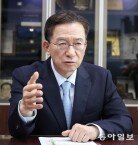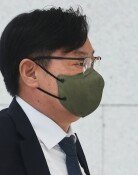Wakamiya`s Review from Tokyo A lesson from the forgery of official letters
Wakamiya`s Review from Tokyo A lesson from the forgery of official letters
Posted May. 14, 2015 07:24,
The Joseon Delegation to Japan during the Edo Period, a documentary film made in Japan 36 years ago, shows signs of revival in both Korea and Japan. There are some moves to screen the movie in Busan and Seoul, and the Japan Center for International Exchange where I work plans to show the movie in Tokyo. It is under review whether to show the movie to renowned Korean and Japanese scholars in a symposium marking the 50th anniversary of the normalized diplomatic ties between the two countries to be held in Jeju in mid-June.
The Joseon delegation was a large group of people of the Joseon Dynasty sent to Japan at the request of Tokugawa Ieyasu in the early 17th century. It was sent to Japan 12 times over a 200-year period. The delegation, which included famous scholars, artists and entertainers, left Busan and went to Tsushima and Edo (todays Tokyo) over several months and it was greatly welcomed in Japan. It had great implications because it not only recovered the relationship between the two countries, which was broken by Toyotomi Hideyoshis invasion of Joseon, but also produced various cultural exchanges.
The movie was made by Shin Gi-soo, a late Korean researcher in Japan. He collected valuable relics and pictures of the delegation scattered across Japan and put them in the movie. It was a masterpiece that brought the almost-forgotten history of Korea-Japan exchanges back to life.
The film is highlighted today partly because there is a move to register the delegation to the list of the World Cultural Heritage around the 50th anniversary of the normalized relationship between the two countries. I would like to see it as a positive news amid uncomfortable bilateral diplomatic relations.
The delegations visit to Japan was initiated by the Tsushima domain which served as a broker between the Edo Shogunate and the Joseon Dynasty. But what I am interested in is the ridiculous forgery happened in the course of the process. According to researchers who study Korea and Japan, the story goes as follows.
Tokugawa Ieyasu requested the delegation first. In return, however, the Joseon Dynasty demanded Ieyasu apologize for the invasion led by Toyotomi Hideyoshi and send an official letter requesting a delegation. Ieyasu who toppled the Toyotomi Hideyoshi regime thought that he was irrelevant to the invasion of Joseon and was unlikely to respond to the dynastys request. The Tsushima domain, which was put in an awkward position, made an idea and sent a forged official letter that contains what the Joseon Dynasty wanted.
Being surprised at the quick response, the dynasty suspected the document was forged. Despite serious internal discussions, it decided to send a delegation because it found that it is better to bring peace to the bilateral relationship and take back as many prisoners of war as possible.
The first delegation in 1607 carried the kings official letter as a response. If Ieyasu takes it, the forgery would come out. For such reason, a retainer of the Tsushima domain who accompanied the delegation replaced the letter with a fake letter that would not incur Ieyasus suspicion. Some say that a person who knew well about the situation was involved in the process. As a result, a new chapter of a peaceful relationship between the two countries was opened.
About 30 years later, the forgery was known to the Tokugawa regime because of a whistleblower --a senior retainer of the Tsushima domain who betrayed the domain. The head of the domain was taken to Edo and questioned about suspicions raised about his predecessor. His family could be exterminated. However, Tokugawa Iemitsu, the grandson of Tokugawa Ieyasu, did not hold him responsible for it and exiled the whistleblower. As a result, the exchanges with the Joseon Dynasty brokered by the Tsushima domain continued and the delegation remained unaffected. What a dramatic story it is!
How could this happen? For the domain which managed to make ends meet through bilateral trade, a friendly relationship between the two countries was a matter of life and death and the forgery of letters was a life-or-death decision. Both countries, which did not make it a diplomatic issue, also made a wise decision.
About 400 years fast forward. Such diplomacy does not work today at a time when the presidents and the prime ministers remarks are delivered real-time to the other side. Then, is it right for the other side to point a finger at our flawed remarks?
The forgery of information is out of the question, but we need to look at the other sides good parts and improvements to some extent. Diplomacy is not just about fighting until what one thinks right is fulfilled. Todays diplomacy may need to learn some lessons from our ancestors who sometimes pretended that they did not see anything and extended a helping hand to the other side for a greater cause of their country.
(Written by Yoshibumi Wakamiya, senior fellow of Japan Center for International Exchange and former chief editor of the Asahi Shimbun)
Headline News
- Med professors announce intention to leave hospitals starting Thursday
- Bridge honoring Sgt. Moon Jae-sik unveiled in Pennsylvania
- Chief of Staff Chung tells presidential secretaries to stay away from politics
- US FTC bans noncompete agreements
- N. Korea launches cyberattacks on S. Korea's defense companies







